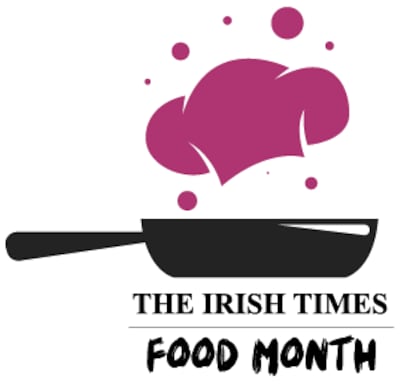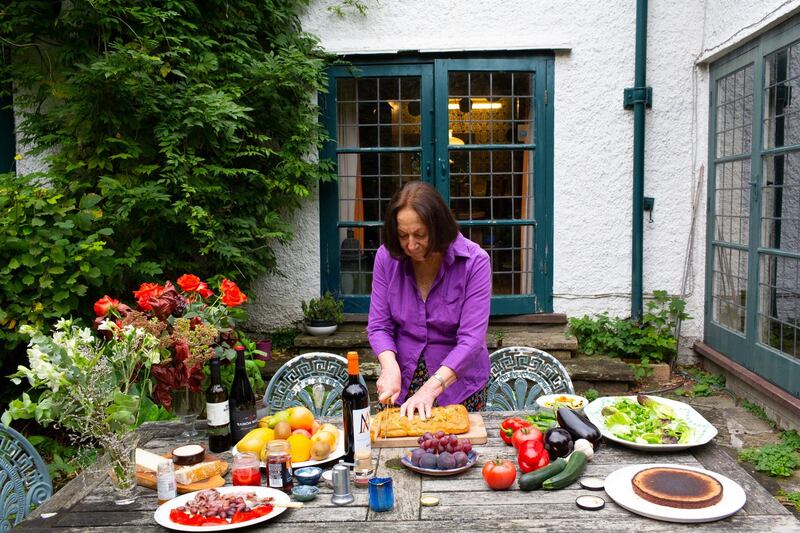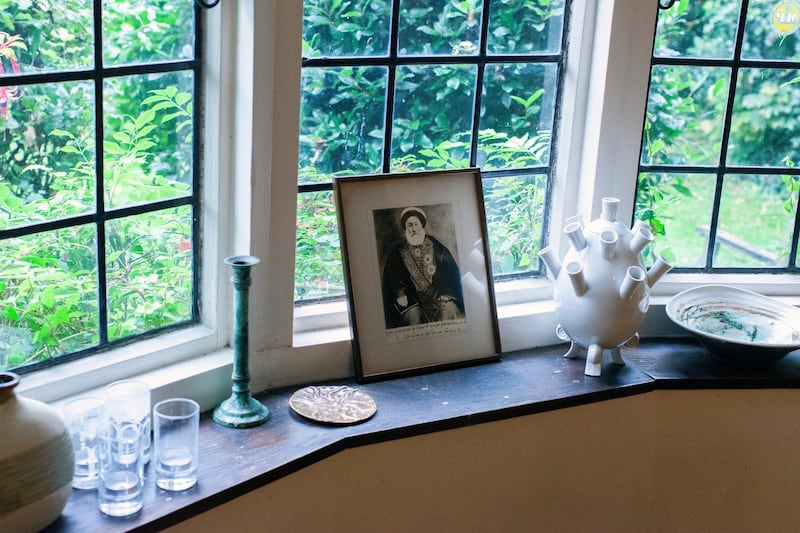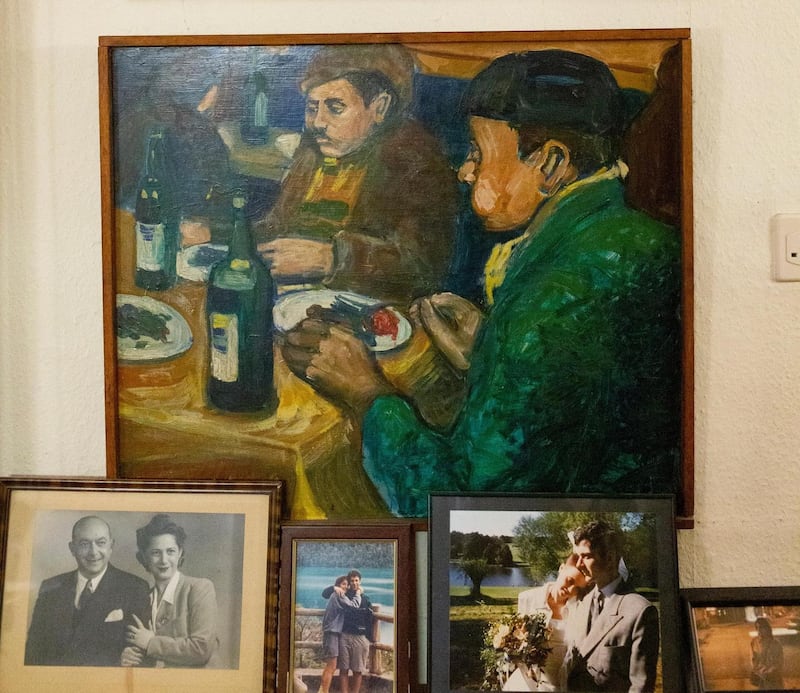If you've ever swiped a supple piece of pita bread through a plate of garlicky hummus and your family roots aren't in the Middle East, you may have Claudia Roden to thank.

In 1968, in the modestly titled A Book of Middle Eastern Food, the 32-year-old Egyptian exile gave the non-Arabic-speaking world one of its first detailed looks at this rich cuisine. Through hundreds of traditional, comprehensive and carefully tested recipes, such as herb-flecked Lebanese tabbouleh and Syrian lamb kibbeh, she introduced western home cooks to the subtle, extensive art of Middle Eastern cooking.
Before her book, she could find no volume of recipes like this published in English or in any European language. If you wanted to make baba ganoush, you might persuade a Turkish or Egyptian cook to share family secrets passed down through generations. But let’s face it: before 1968, chances were good you’d never tasted baba ganoush.
A Book of Middle Eastern Food has been around for so long, it feels like prehistory. It was really revelatory for its time
Over the course of her 50-year career, Roden, who is now 85, has helped revolutionise the way we cook and eat. She explained how to blend cucumbers with yogurt and garlic into a creamy salad, how to simmer lentils with cumin to make a warming soup, and how to fold filo stuffed with cheese and herbs into flaky bite-size pastries.

As if that wasn't legacy enough, she also helped shift the way writing about cuisine, particularly by women, was perceived. Paul Levy, chairman emeritus of the Oxford Symposium on Food and Cookery, of which Roden was a founding member, says her scholarship on food was part of a growing cultural trend. Along with culinary writers such as Elizabeth David, Jane Grigson, Sri Owen and even Julia Child, he says, she deepened the conversation around food to address questions of culture, context, history and identity.
Her dozen cookbooks, particularly The Book of Jewish Food, produced a genre of works that is at once literary and deeply researched while still being, at heart, practical manuals on how to make delicious meals. When Roden started writing A Book of Middle Eastern Food, David had already published a handful of Middle Eastern recipes – notably, hummus bi tahina – in her far-ranging A Book of Mediterranean Food in 1950. But it was Roden’s work that took on the entire cuisine of the Middle East in depth, in ways both scholarly and highly personal.
Yotam Ottolenghi, the chef, cookbook author and New York Times food columnist, credits Roden with laying the foundation for chefs like him. “A Book of Middle Eastern Food has been around for so long, it feels like prehistory,” he says. “It was really revelatory for its time.” In fact Roden’s book was all but ignored when it came out, on the heels of the 1967 Arab-Israeli War, in which Britain – where Roden moved to study art, and where she has been based since the early 1970s – supported Israel.
“At that moment no one was interested in the food of the enemy culture,” says Roden, who identifies as a Sephardi or Mizrahi Jew (Mizrahi is the Israeli term for Jews from the Middle East and North Africa). “When the book came out, people would always ask me if all the recipes were for testicles and eyeballs.”

Roden recounts this in late summer as we sit in her flower-bordered garden in north London, savouring bullinada, an aioli-spiked fish stew, a recipe from her latest cookbook, Med.
At the border of the lawn stands a hedgerow of scarlet-blossomed fuchsia trees reminiscent of the fluorescent bougainvillea on her family’s terrace in Cairo, where she lived until she was 15. That’s when she left for boarding school in Paris – and she didn’t return until a quarter-century later. By that time her family had long been expelled from Egypt and her childhood home was gone.
Claudia Douek was born in 1936 to a large, prominent Syrian Jewish family who had emigrated to Cairo in the 19th century. This was when the Egyptian capital supplanted Aleppo as the region’s mercantile centre after the opening of the Suez Canal.
Cairo had a diverse, polyglot culture. Roden’s first language was French (as it was for all cosmopolitan Jews in Cairo), followed by Italian (the language of her beloved nanny), English and Arabic. Her maternal grandmother, who could trace her ancestry back to pre-Inquisition Spain, spoke Judeo-Spanish (Ladino), which Roden absorbed and which helped her research and write The Food of Spain, published in 2011.

She lived with her parents, Nelly and Cesar Douek, and two brothers in a prosperous circle of extended family, with dozens of cousins, aunts and uncles nearby. They all gathered regularly for opulent feasts scented with rosewater and toasted coriander; every holiday, wedding, birth and even Shabbat dinner was celebrated on a grand scale.
You had to have taken a lot of trouble rolling almond paste into balls, making filo fingers, stuffing aubergines. One-pot meals would have been an insult
Roden describes the cuisine of the Syrian Jews as sophisticated, abundant, varied – and purposely intricate and time-consuming. “If you didn’t labour over a dish, people thought you didn’t love them,” she says, handing me a wedge of home-made Turkish yogurt cake, the souffled top glowing with red sugared berries. “You had to have taken a lot of trouble rolling almond paste into balls, making filo fingers, stuffing aubergines. One-pot meals would have been an insult.”
When Roden talks about her childhood, you can hear the longing in her voice – not just for the food but for the entire way of life. Much of her work has been an attempt to reconstruct the lost scents, sounds, tastes and feelings that flowered on that Cairo terrace. Her recipes capture the flavours; the stories she enfolds around them evoke the richness of a lost universe.
The London-based cookbook author Diana Henry calls Roden our greatest living food writer. "Wherever she is, she tries to re-create the Egypt of her childhood," Henry says. "She's held it very clearly in her head for all these years, and it comes across in her writing. Reading Claudia is like going somewhere."
In 1956, during the Suez crisis, the president of Egypt, Gamal Abdel Nasser, expelled the Jews from the country. Leaving all their possessions behind, the Douek family made their way to London, where Roden attended St Martin’s School of Art and went on to become an accomplished painter.

Nelly Douek’s kitchen became a gathering place for fellow exiles. They sought succour in stuffed vine leaves and honeyed pastries, and companionship in the memories they all shared. Although most of the cooking in Roden’s childhood home was done by servants, Nelly Douek and her friends chopped herbs, kneaded doughs, stuffed vegetables and rolled confections in London, laughing and reminiscing over cups of syrupy coffee.
Throughout the Middle East at that time, a family’s heirloom recipes were among its most closely guarded secrets. The indiscreet sharing of a recipe would have been nearly as bad as negotiating an unfortunate marriage for one of the children.
In exile, things were different. The exchange of recipes became a currency, a way of communicating and expressing love. And women were freer to choose their husbands (Roden married Paul Roden when she was 22; the couple had three children before separating in 1974).
We all felt a very strong need to collect, to record recipes. If we don't collect it, it will disappear
In her mother’s busy kitchen, Roden heard the women ask the same question – “Do you have any recipes?” – every time a cousin or friend would arrive. They shared the secrets to their dishes so that when any one of them prepared that rich orange-almond cake or a mint-sprinkled tahini salad, they would remember one another and feel loved and understood.
Roden took notes, detailing regional pilaf variations and each cook’s method of layering onions, tomatoes and pita bread into fatoush. “We all felt a very strong need to collect, to record,” Roden says, adding that it was all part of preserving culture and identity. “If we don’t collect it, it will disappear.”
She amassed more than 1,000 recipes and stories this way. These became the cornerstone not only for A Book of Middle Eastern Food but also for The Book of Jewish Food, as most of the families who passed through the Doueks’ home were from the Sephardic Jewish diaspora. In addition, she spent 10 years researching recipes and customs from other parts of the Arab world.

She worked on those two canonical books for a combined total of 25 years. But she wasn’t done. When her children grew up and left home, she left too, travelling across the world to research her books The Food of Italy, The Food of Spain and Arabesque: A Taste of Morocco, Turkey & Lebanon.
On these trips she delighted in talking to anyone about food and culture: people on trains and buses, waiters in cafes and maids in hotels. She’d ask them what they liked to eat and if they had any recipes. Travelling alone, Roden had a knack for getting herself invited by strangers to try a local speciality, like the octopus-and-potato salad from the Greek island of Skopelos in her most recent cookbook. “As I was walking by a family eating on their terrace, they invited me in to share their octopus salad and a bottle of wine,” she wrote. “It was heaven.”
Levy, of the Oxford Symposium, calls Roden a culinary anthropologist. “She’s gone around and done what is the equivalent of field work, then dealt with it in a sophisticated, analytical way,” he says. “She’s a serious thinker.”
You have this sense of what it would be like at her house in Cairo, sitting on her terrace, watching the sunset
Of all her books, Med is the most poetic, the most lyrical (with photographs by Susan Bell) and perhaps the one that most unites all of her many facets. Containing 100 recipes and spare but warm prose, it has an intimacy that shows these are the dishes she’d cook if you came to her house, gathered from her lifelong travels. But instead of striving to faithfully record someone’s recipe, as she does in other books, she has taken the creative licence to tweak them to suit herself. There’s an emphasis on vegetables and grains, and in many cases, simplified, streamlined techniques (and even an occasional one-pot meal).
The food writer Nigella Lawson, a friend of Roden since Lawson was 19, calls this book a distillation of Roden’s joyful, generous spirit. Reading it is like talking with her in her garden, Lawson says. “All of a sudden, there are all these exquisite little plates in front of you, and she’s telling you to dip something in olive oil. And you have this sense of what it would be like at her house in Cairo, sitting on her terrace, watching the sunset.”
Which is, of course, exactly what Roden has set out to do. "Writing this book was a way of bringing back my past," Roden says as the light casts a warm glow over her garden, "and enjoying all of my memories." – This article originally appeared in The New York Times
Med: A Cookbook is published by Ebury Press














